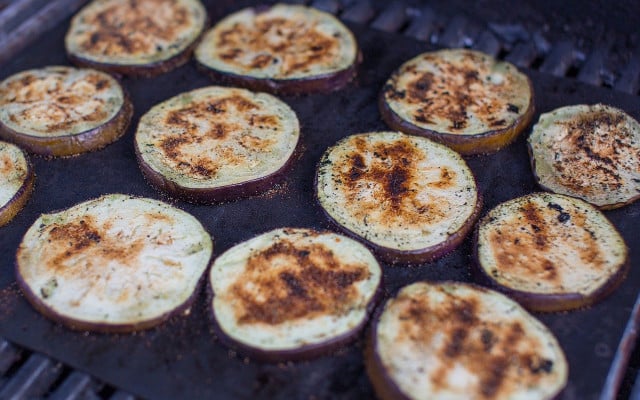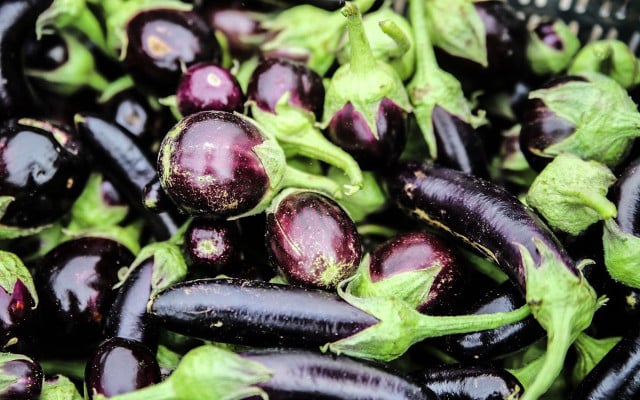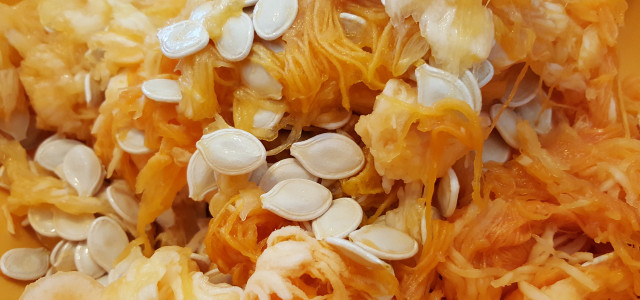This article will teach you how to fry eggplant with. The wonderfully versatile and multifaceted fruit does not need much fat to enhance the flavor – in fact, you can prepare it without using any oil at all. Also, we’ll show you how to ensure your eggplants do not get soggy.
If you’ve ever tried frying eggplants before, you’re likely aware of how much greasy oil they absorb during frying. Therefore, if you’re looking to lose weight, you need to be mindful of how you should prepare them.
As luck would have it, there is a multitude of vouchsafed methods that you can try at home involving frying eggplants with less oil that involve proper salting and soaking preparation techniques that we are more than happy to share with you. We’ll also give you tips that will help you reduce your carbon footprint at the same time. So, let’s roll up our sleeves and get to it!
How to Fry Eggplant (with Less Oil)
Generally speaking, the soft, squishy texture of the eggplant contains a multitude of little air pockets which act as a sponge for hot oils or other liquids when fried. One of the easiest tricks to prevent excess oil is to delicately control the oil you apply to the pan. Another key step is to salt your eggplant slices before frying them.
Here’s a quick ingredients list and a step-by-step guide on how you can fry eggplants with less oil:
Ingredients:
- 2 medium eggplants, sliced diagonally
- Salt and pepper, season according to taste
- ¼ cup of organic, extra virgin olive oil
Instructions:
- Slice your eggplant into slices that are 1 to 2 inches thick and salt them.
- Rinse or dry off the excess salt.
- If possible, use a non-stick pan. If none are available, simply be more vigilant when cooking. Spray a tiny bit of oil into the pan.
- Add eggplants to the frying skillet and season accordingly.
- Keep an eye on slices as they brown and make sure to fry both sides equally. 2-3 minutes per side is ideal.
- Remove slices from the pan and drain them on a drying rack.
- Once cooled, they are ready to be enjoyed.
Variation: If you don’t wish to use oil at all, you can also substitute it for small amounts of water or vegetable broth.
- With a deft sleight of hand, add one to two tablespoons of broth or water gradually to the pan when frying. We recommend that you don’t exceed this, as your eggplants can easily get moist.
- Keep applying until your eggplant is browned and crispy.
For an easy, additive-free recipe, check out our guide on how to make homemade vegetable broth.
How to Make Sure Your Eggplant Isn’t Soggy
As you may know, eggplant is a product that can oxidize and turn brown shortly after being cut. Therefore, we recommend only slicing it shortly before you’re planning to fry it. One tip recommended by grandmothers the world over is to apply a dab of lemon juice to prevent premature browning. This also works great if you need that extra bit of prep time.
Another great technique that prevents sloppy and slimy eggplants is to salt them before frying. Adding salt to your eggplant will break down the cell walls of the fruit, which in turn will stop them from soaking up too much oil when cooking.
All you need to do is gently sprinkle salt over both sides of your eggplant slices. After ensuring they are well covered, let the salt sit for roughly 15 minutes before drying it with a clean cloth. After this salt has absorbed much of the eggplant’s water, they’re all set for the pan.
Soaking Eggplants Before Frying



You can also combine salting with soaking to further keep your eggplants from turning slushy on the frying pan. We recommend that you soak your eggplant slices beforehand in a bowl of water that’s been salted with several tablespoons of salt for 30 minutes to 45 minutes.
From our experience, this not only leads to fried eggplants becoming less greasy when they’re fried but can also reduce some bitterness in their taste. By salting and soaking your eggplant properly, you can easily eliminate excess liquid in the fruit’s cell walls without compromising any of the beloved taste or texture. Don’t forget to rinse off the salt before cooking.
When Are Eggplants in Season?
When it comes to sourcing them, it’s worth keeping in mind that eggplants are warm-weather plants. Although they are cultivated across many corners of the world, locally produced eggplants will only be available and in season throughout the mid-summer up until early fall. In the US, this means eggplants can be found from May up until October.
As we touched upon earlier, the size and color of eggplants will differ wildly depending on the subspecies and where they are grown. Despite these varieties, look for plants that have glossy skin, feel heavy yet also have a firm texture once you squeeze them. The larger eggplants tend to be a little bit more bitter. However, the fresher they are, the less bitter the overall flavor of the eggplant will be once fried.
To ensure that you never miss eggplant season, be sure to consult the seasonal food guide to find out which produce is available near your hometown throughout the entire year.
Why It’s Better To Buy Local Eggplants and When They’re in Season



You want to make sure that the eggplants you are frying are reasonably sustainable? In this case, locally sourced eggplants are a good choice. Cultivating them doesn’t lead to pollution of water, land, or air quality, given that no pesticides are used. To ensure you’re minimizing your carbon and water footprints, be sure to only buy organic eggplants without GMOs.
However, with big business, the clarity of sustainability becomes murky. On an international scale, eggplants are produced in China, India, Egypt, Iran, Turkey, and the United States. Between China and India, 83 percent of the world’s eggplants are produced and shipped worldwide. Any large-scale production of eggplants becomes more problematic.
With monocropping, large amounts of chemical fertilizers and pesticides are used, making it incredibly harmful to the environment. However, this isn’t to say that the US isn’t culpable for this damage also.
Therefore, we wholeheartedly recommend that our American readers buy locally sourced eggplants over the varieties found in big supermarkets. Not only will you be saving energy otherwise wasted on transport and cooling, but you can also sleep easy knowing that you’re helping the planet too. Ask your local farmer at the markets for more information to be certain.
Nutritional Value of Fried Eggplants
Early eggplants were white, and egg-shaped, which predictably led to their modern name. They remarkably grow in all shapes and sizes; green, purple, orange, circular, or long and slender. The eggplants that we’re familiar with in the west possess a vibrant deep purple outer skin that’s both rich in nutrients and potent with antioxidants.
Eggplants are rather high in fiber and low in calories, making them a worthwhile superfood in any balanced diet, with some studies suggesting that they can even help combat type 2 diabetes. However, all of this will be in vain if you only serve oily, greasy eggplant slices. We hope that, by learning how to fry eggplants with less oil, you can enjoy a more nutritious diet that helps you feel better in both your body and mind.
Do you like this post?








